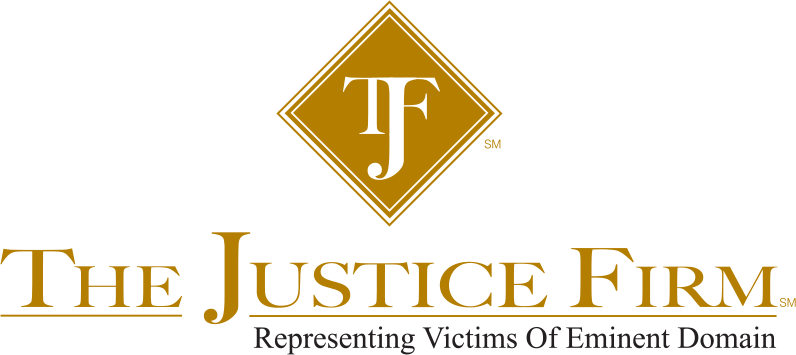
Who do we represent?
No property is immune from the threat of eminent domain. We represent anyone in the State of North Carolina who owns property and may be a victim of eminent domain. This means individual home owners, all types of businesses, HOAs, owners of vacant lots, churches and all other land owners.
What is the firm’s fee?
The Justice Firm, LLC works on a contingency fee basis. This means that the amount you owe us is based upon the amount of additional compensation you receive from the case. Our fee is one-third of the additional compensation we earn for you – meaning you will not owe us anything if we do not succeed in getting you additional compensation and you will still receive the full amount from the initial offer (less the amount your Lender is entitled to).
What information do you need from me?
When you elect to have Ms. Justice as your attorney, we ask that you complete a client intake packet. This can be completed online and will give us the information necessary to begin negotiations on your behalf. After that, we will need a copy of the offer letter and appraisal report you received from the right of way agent in addition to any other information that may impact the value of the remaining property.
Will you need to see my property?
With the ease and accessibility of GIS software such as Google Earth, we may not need to see your property in person. This is decided on a case by case basis and depends on the unique circumstances surrounding your property.
How soon do I need to hire you?
We recommend that you hire representation (whether us or another firm) as soon as possible to ensure there is no communication between you and the right of way agent that can be used against you.
What is the difference between eminent domain and condemnation?
Eminent domain and condemnation mean the same thing and are often used interchangeably. Eminent domain is the right of a government or agency to take private property for public use, whereas condemnation is the legal process of eminent domain.
What constitutes “public use” of a property?
The definition of “public use” is not exclusively defined and therefore, can be interpreted quite broadly. Public uses such as highways, schools, parks, prisons, airports, and government facilities are quite clear but others such as enhanced utility access or new pipeline routes aren’t quite as obvious.
How long does the condemnation process take?
The amount of time an eminent domain or condemnation proceeding takes can vary dramatically. Some cases may settle in as little as six months whereas others may take years. The amount of time the case takes depends on a variety of factors such as the date the project goes into right of way, the willingness of the condemning authority to negotiate, or changes to the project plans.
What if they are only taking part of my property?
There are two types of takings: total takings and partial takings. Total takings are when the condemnor takes your entire property, whereas partial takings are when they only take part of your property. The majority of takings are partial takings. For example, when the condemnor takes a 20 ft strip from several properties in order to widen a street, that is a partial taking. Partial takings pose additional complications, such as safety concerns due to increased proximity to the road or decreases in property value, and therefore are much more difficult to navigate without attorney representation.
How do I know if the government is making me a fair offer?
Ensuring that the government’s appraisal of your property reflects the true worth of the property as well as any damage the taking may have on any remaining property is a critical part of the condemnation process. Too often, the appraisals used by the DOT as well as state and local governments fail to capture all of the ways in which property can be valued or they fail to include the ways in which the property’s components contribute to its overall value. For example:
- Business owners — Access, location and parking are all aspects that contribute to a site’s value. When these and other aspects of a property are disrupted or taken, even temporarily, it can impact the value of the entire property. A particular property may have ample parking or a high traffic count that can help generate income. If the income the property generates is diminished because of the taking the diminution in value needs to be included in the appraisal report.
- Homeowners — A home is the place where many of our most special moments in life take place. When a street is widened, the government may not recognize, or may undervalue, the impact a partial taking has. Issues such as safety concerns from being too close to the road or noise from increased traffic all have significant
